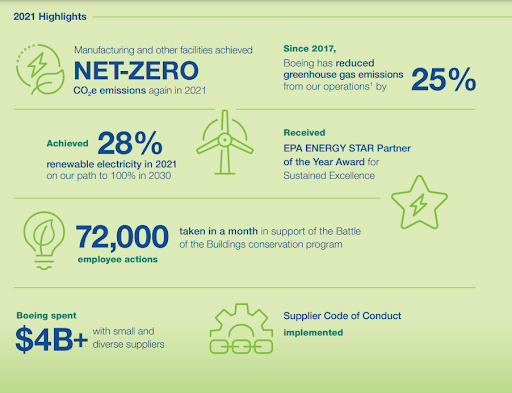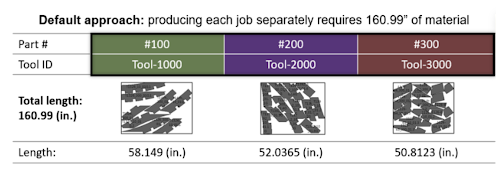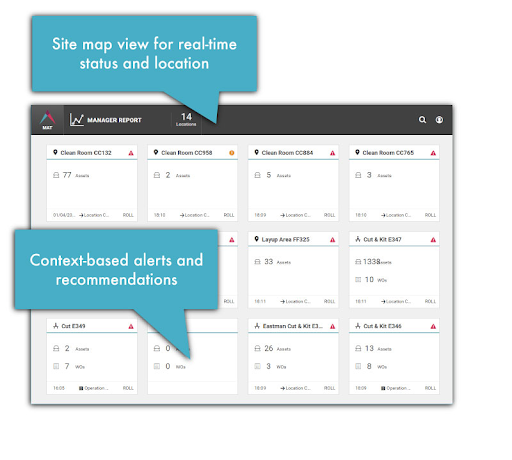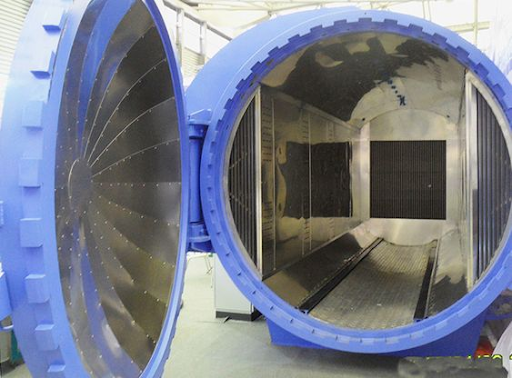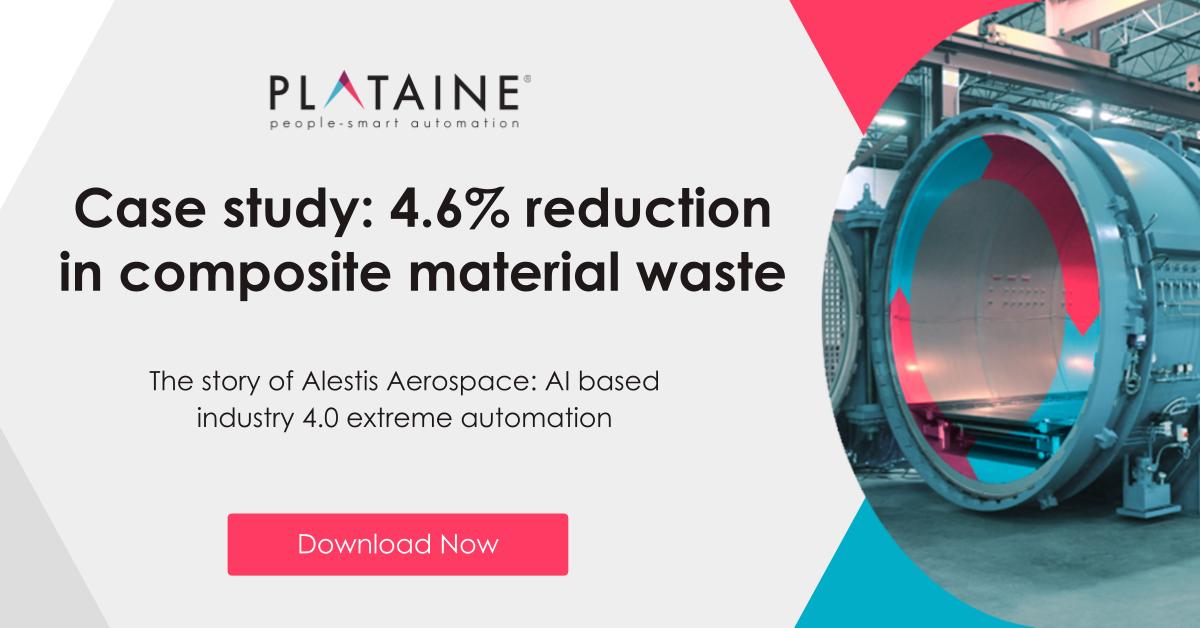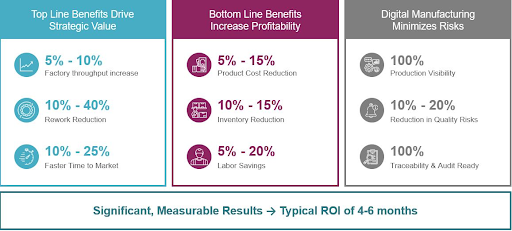The U.S. Environmental Protection Agency defines sustainable manufacturing as the creation of products in a manner that takes environmental factors into consideration and actively seeks to minimize negative impacts while saving on energy and natural resources. Sustainable manufacturing also enhances employee, community and product safety.
Currently, manufacturing processes use roughly one-third of the world’s energy, and these numbers are only expected to rise.
Manufacturers are under global pressure to emphasize environmental sustainability and achieve net zero emissions. For instance, Prince Charles recently opened the inaugural Aerospace Global Forum (AGF), focusing on the sustainable and intelligent future of the aerospace industry and its wider ecosystem.
New regulations and public opinion are forcing the industry to respond and be proactive more than ever before.
Boeing recently released its annual sustainability report, disclosing the company’s environmental, social and governance milestones, including highlights and commitments, such as the commitment to deliver commercial airplanes that can travel on 100% sustainable fuels by 2030.
The report also shares interesting benchmarks:
The complexity of Aerospace composites
When it comes to composites, the situation is complex. Composites manufacturers are used to having their products evaluated based on quality, performance, pricing, etc.; now, customers and other supply chain players are pushing towards an additional parameter: the sustainability of their manufacturing operations.
In fact, composites already play a vital role in sustainability. They are extremely lightweight, which translates to improved fuel consumption and reduced emissions. They are also extremely resilient, and using them can increase products’ lifespan by literally decades.
Government mandates are also enhancing the shift towards sustainable manufacturing practices. For instance, the European Union’s Registration, Evaluation, Authorisation and Restriction of Chemicals (REACH) regulation requires all manufacturers to identify and manage the risks of the chemicals that they use. The authorities can ban specific materials.
On top of that, supply chain is a sustainability driver as well: it’s not enough for an Aerospace manufacturer to know that their internal manufacturing processes and resulting products are within regulations — they also need to know that their suppliers comply.
Mike Gromacki, president of Dixie Chemical Company, says: “When there’s a sustainability orientation of the market, and the growth is tied to sustainability issues, the participants in that market are generally held to a higher standard.”
To summarize: the sustainability trend is gaining traction, and the current demand from supply chain players is changing the competitive landscape, leaning towards composite manufacturers that are proactively investing in sustainable manufacturing processes.
Adapting manufacturing processes
Since sustainability relates to the entire production process, it results in optimization actions that span way beyond the type of materials used.
Historically, the composites industry enjoyed being perceived as very environmentally friendly. As mentioned above, composites—by definition—allow for lighter aircrafts and reduced fuel consumption. But that is not enough anymore, as the processes of making and fabricating composites are not environmentally-friendly. An opportunity for improvement lies with the implementation of smart-manufacturing processes based on Industry 4.0 solutions.
The move towards smart manufacturing processes through advanced digital capabilities boosts productivity and reduces costs. Analytics and automation allows manufacturers to enjoy 100% visibility and traceability. The mix between data analysis and predictive capabilities helps manufacturers diminish energy loads and reduce material waste—key elements of sustainability.
How does it work?
The role of AI and IIoT in reaching new standards of sustainability
Naturally, AI and IIoT are leveraged in the composite manufacturing industry in order to enhance material savings, reduce waste and increase throughput while minimizing energy consumption.
Besides its crucial role in saving money and increasing profitability, Industry 4.0 tech enhances sustainability.
Here are a couple of specific use cases:
- Automated cutting plans that maximize material use and minimize waste
Manual cutting plans aren’t based on upcoming demand, production floor context and production plans. As a result, unneeded parts are being cut; the cutting plan itself isn’t being optimized for minimal waste and the rolls being selected aren’t the ones that should be used first.
Automated cutting plans that rely on IIoT sensors and AI-based calculations lead to drastic changes: dedicated software integrates seamlessly with existing legacy systems such as ERP, MES and alike, and the cutting plans become dynamic and transform in real time, based on immediate changes in the production planning or the manufacturing floor. Rolls can be cut into multiple part types simultaneously, and can therefore be fully taken advantage of, with minimal waste. This can amount to over 10% greater material utilization. Different work orders can be merged into a single cutting plan, and material use is optimized.
Figures 1 and 2 below demonstrate this case. When several cutting plans are combined into one, 19.47% of material is being saved compared to the manual option:
Fig. 1. – a simple approach, where each job is arranged into a separate cutting plan
Fig. 2. –Using AI, where all three jobs from Fig. 1. above have been combined into a single cutting plan that matches the production plan, resulting in significant material savings
The software assigns optimal rolls for the task (preferably short ones if possible, in order to save on material) and considers expiration dates for rolls that have already been defrosted. The rolls are tagged using IIoT sensors and can therefore be easily tracked, including how much was spent outside of the freezer. The kitting process is optimized and managed as well.
Oftentimes, the workforce would prefer to neglect short rolls and use the longer ones, as they are much easier to work with. AI software solves this problem by assigning just the right raw material that fits the work order. Since the system is aware of future work orders and every production and cutting plan in real time, it knows how to optimally allocate the defrosted rolls based on their length, temperature, exposure time and more. Keep in mind that the reduction in waste also saves on disposal costs, an aspect we haven’t yet mentioned.
This of course can’t be done manually by humans, as it demands hyper automation and AI capabilities.
You can learn more in this case study —download it here:
- Time sensitive material management through the entire manufacturing floor
In this use case, time sensitive composite materials are managed completely differently from the moment they arrive on site.
First, each roll is tagged and all needed info is automatically collected. This saves on heavy lifting, manual work and reduces human error. The potential for material expiration due to inefficiencies and errors during this stage is minimized. The software uses AI capabilities to decide on the optimal rolls to defrost, given the greater context at any given time.
IIoT sensors allow the software to track location, temperature and other factors. For instance, if the roll temperature rises above X degrees, the software automatically starts counting exposure time, triggering alerts when needed and preventing expiration, as the exposure time left (ETL) immediately starts to count down.
Such a system radically improves quality control as it provokes alerts that prevent accidental usage of expired materials.
- Tool and assets management to reduce quality defects that result in waste and rework
In this use case, other elements such as molds are tracked as well. When tools that should have gone to maintenance are used in the production process, the result can be defects that create waste and rework, even though the material itself was good. The Tool Manager tracks tool usage and location in real-time throughout the manufacturing processes and ensures that tools are maintained just in time and do not create production defects. The system tracks many other elements on the production line in real-time, including kits, resin buckets, resin kits, core splices and more.
Watch this video to learn more about how the tool management software works:
Saving energy and supporting sustainability during the layup and curing
In order to support the smart usage of energy, the Digital Assistant intelligently provides recommendations on how to achieve optimal scheduling, maximize throughput, and save on energy costs. This ensures that the autoclaves are coordinated ahead to work when they are full. Increasing autoclave utilization is extremely critical for energy saving and plant sustainability.
An autoclave used in Aerospace composites – image source
- Supporting the recycling of expired materials
According to this resource, “only 15% of the 110,000 tonnes of composites produced in the UK each year will be reused or recycled at their end-of-life.”
Since the AI software tracks the material in real-time, it instantly knows about expired material and can provoke alerts for fast response: sending the material to the lab in order to expand its expiration, repurposing material for non Aerospace products that don’t demand such high standards, or sending it to be recycled instead of being thrown away by mistake.
Composites manufacturers today understand that there are significant competitive and business advantages to sustainability reached via leveraging AI and IIoT, since it results in reduced waste and lower operational costs, as shown in this image (data is based on Plataine’s customer base):
Summary
In a recent Accenture study it was revealed that 63% of Aerospace manufacturers executives anticipate that up to 1/3 of their revenues will come from more sustainable products or services in the next 5 years.
Moreover, 49% of aerospace and defense executives believe that it will be imperative for their company to measure, incentivize and communicate sustainability performance 3 years from now, compared to just 22% today.
When planning towards sustainable manufacturing, the approach should be holistic and much more comprehensive than only pitching specific materials.
The good news is that manufacturers who will embrace the change and meet the new sustainability standards will also enjoy significant financial benefits including an increase in profitability, cost savings, increased efficiency and productivity, and more.
Another perk is maintaining competitiveness due to being compatible with the new sustainability standards and regulations, satisfying both customers and supply chain players.
By implementing dedicated technologies for Aerospace composites manufacturing optimization, manufacturers can get as close to sustainability as possible and all this while gaining impressive ROI.


